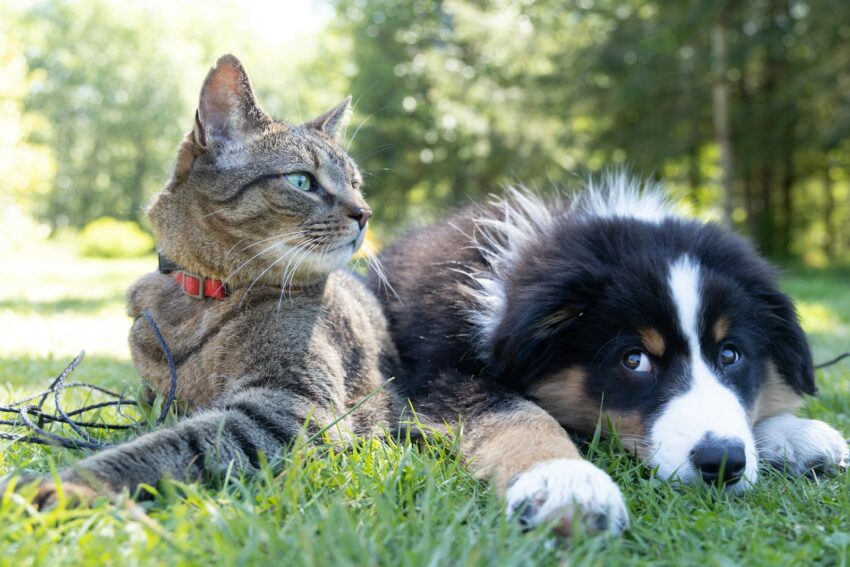Families with pets often face the challenge of keeping fleas away without using harsh chemicals that could harm children or animals. Natural solutions can control fleas effectively while keeping the home safe. Chemical-free flea treatments protect both pets and kids from exposure to toxins while breaking the flea life cycle inside the home.

Simple methods such as using diatomaceous earth on carpets, washing pet bedding often, and vacuuming daily can make a big difference. Natural sprays with essential oils like peppermint or rosemary also help repel pests. A protective flea and tick collar for dogs offers long-lasting defense without synthetic chemicals, making it a safe choice for households with children.
Parents can create a healthy environment by combining these safe methods. With the right natural tools, families can keep fleas under control and maintain a comfortable, pest-free home for everyone.
Key Takeaways
- Chemical-free flea control keeps pets and children safe.
- Natural products and habits help stop flea infestations.
- A protective flea and tick collar supports long-term prevention.
Chemical-Free Flea Control Methods for Homes With Children
Families with children often prefer natural flea control to avoid exposure to harsh pesticides. Safe methods focus on breaking the flea life cycle, using non-toxic remedies, and improving household hygiene to prevent future infestations.
Understanding the Flea Life Cycle for Effective Control
Fleas move through four stages: egg, larva, pupa, and adult. Each stage requires a different approach for control. Eggs fall off pets onto carpets, bedding, and floors, where they hatch into larvae. These larvae feed on organic matter before forming cocoons and maturing into adult fleas.
Vacuuming daily removes many eggs and larvae before they mature. Washing pet bedding and children’s blankets in hot water also helps reduce flea populations. Because pupae resist many treatments, repeating cleaning steps every few days prevents new adults from emerging.
A clear understanding of this cycle allows families to target fleas at every stage. Regular cleaning, pet grooming, and consistent monitoring reduce the chance of a full infestation without chemical sprays.
Safe Natural Remedies for Flea Removal
Several household materials can help control fleas naturally. Salt and baking soda dry out flea eggs and larvae when sprinkled onto carpets and left for a few hours before vacuuming. Diatomaceous earth, a fine powder made from fossilized algae, also kills fleas by damaging their outer shells.
Pet owners should use food-grade diatomaceous earth and apply it lightly to carpets, pet bedding, and cracks in floors. It is safe for children and pets when used correctly but should not be inhaled in large amounts.
Regular combing with a flea comb removes adult fleas from pets. Combining these simple steps creates a safer home environment while avoiding chemical exposure.
Essential Oils and Herbal Solutions for Flea and Tick Repellency
Certain essential oils act as natural flea repellents. Oils such as rosemary, lavender, lemongrass, cedarwood, and eucalyptus can repel fleas and ticks when diluted properly. A few drops mixed with water or a carrier oil can form a gentle spray for pet bedding or home surfaces.
Herbs like mint, sage, rue, catnip, and pennyroyal also discourage fleas. Dried herbs can be placed in small cloth sachets around sleeping areas or near doorways. However, pennyroyal oil should not touch pets directly because it may irritate their skin.
These natural scents deter fleas while adding a pleasant aroma indoors. They provide a mild but steady defense against pests without creating health risks for children.
Mechanical and Environmental Approaches to Flea Management
Mechanical control focuses on cleaning and environmental balance. Frequent vacuuming removes adult fleas, eggs, and larvae from carpets and furniture. Sealing vacuum bags immediately prevents re-infestation.
Washing fabrics and pet bedding weekly helps maintain a clean environment. Outdoor areas may benefit from beneficial nematodes, microscopic worms that feed on flea larvae in soil. They reduce flea numbers naturally without harming pets or children.
Maintaining short grass, trimming bushes, and keeping shaded areas dry also discourages fleas and ticks. These steps create an environment that supports long-term flea control through safe, chemical-free means.
Conclusion
Families can protect pets from fleas without harsh chemicals by using safe, natural methods. Regular vacuuming, washing pet bedding, and using a flea comb help remove adult fleas and eggs. These simple habits reduce infestations and limit exposure to substances that may irritate children or pets.
Natural products such as diatomaceous earth, cedar chips, or essential oils like thyme or mint can repel fleas effectively. However, they must be used correctly and in moderate amounts to prevent skin or respiratory irritation.
Combining clean home practices with gentle, natural repellents creates a safer environment for both pets and children. This balanced approach supports comfort, health, and long-term flea prevention without relying on synthetic chemicals.
